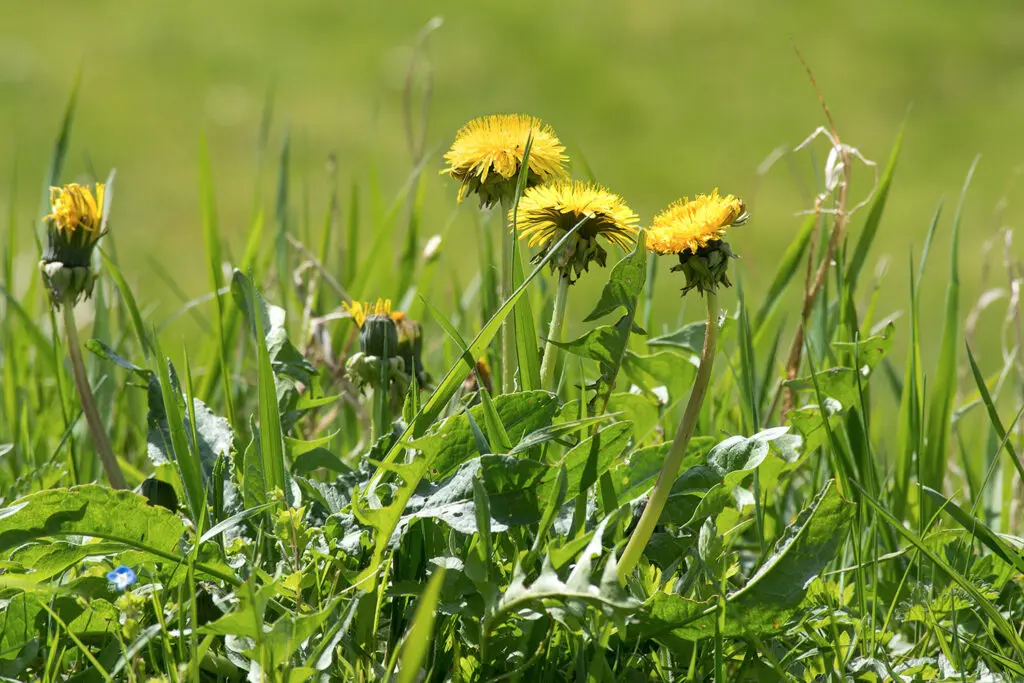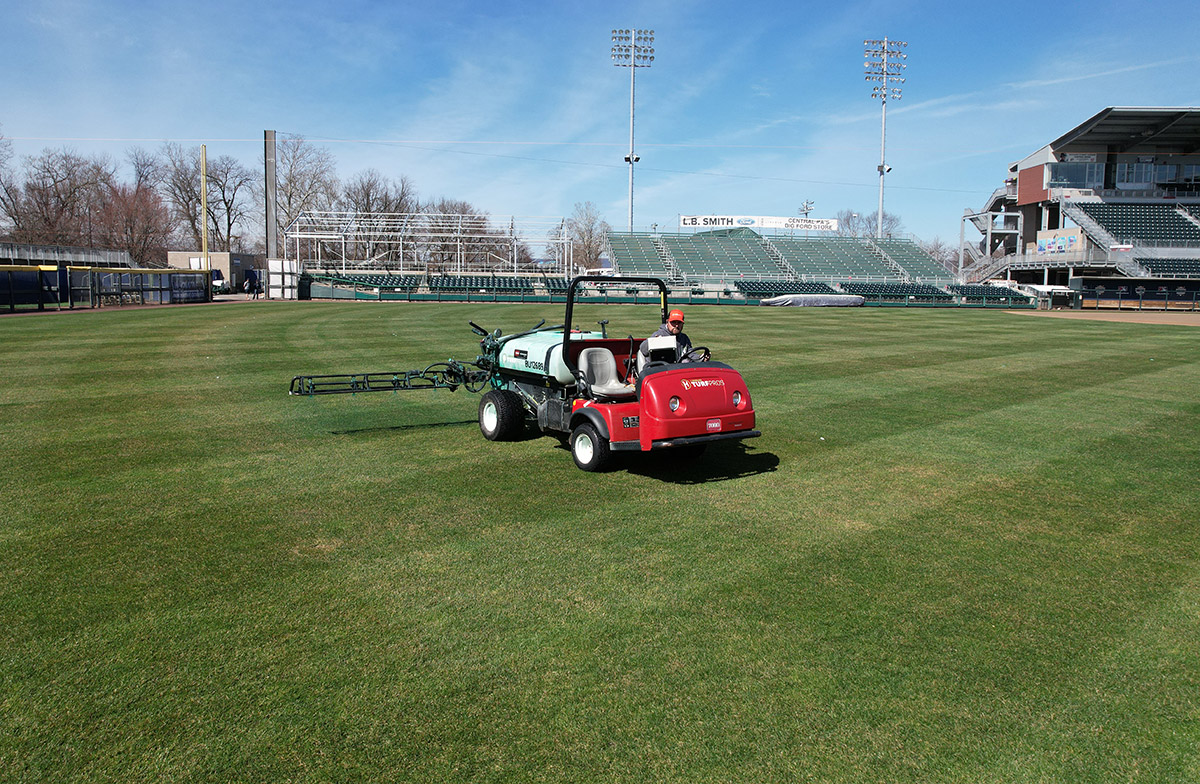
Weeds are every homeowner’s headache, but killing them shouldn’t mean destroying your lawn. At JHL Turf Pros, we believe in smart, selective strategies that remove weeds without harming your grass. In this guide, we’ll show you safe, effective ways to get rid of weeds and maintain lush, green, and healthy turf all season long.
Understanding the Types of Lawn Weeds
To tackle weeds effectively, it’s important to understand what you’re dealing with. Lawn weeds typically fall into two categories: annual weeds and perennial weeds. Annual weeds, like crabgrass and chickweed, sprout, grow, and die within one season. Perennial weeds, such as dandelions and clover, return year after year, making them more stubborn to remove.
Weeds also differ by root depth; some have shallow rooting systems that make them easier to pull by hand, while others send deep roots into your soil, stealing water and nutrients from your grass. Knowing the weed type and rooting depth helps you plan your lawn care approach, especially during warm months when weeds actively grow.
Why Some Weed Killers Harm Your Grass
Not all weed killers are safe for your lawn, and the biggest difference lies between selective and non-selective herbicides. Manufacturers design selective herbicides to kill weeds without affecting grass, while non-selective products—like those containing vinegar or salt—can kill any plant they touch, often harming your lawn in the process.
Some DIY remedies sound appealing but may backfire. For instance, applying vinegar or salt to dandelions might kill the weed, but it can also damage nearby grass and alter soil health. When choosing a weed killer for lawns, always look for a selective herbicide that targets unwanted plants while protecting your turf.

How to Kill Weeds Without Killing Grass
Are you wondering how to kill weeds without killing your grass? The secret lies in spot treating with the right selective herbicide. Manufacturers specifically design products containing ingredients like 2,4-D to kill weeds without harming most grass types.
Timing is critical. Apply treatments when weeds are actively growing, typically in spring and early summer. This ensures that the herbicide absorbs properly and reaches the root system. For the best results, don’t mow right before or after treatments to give the weed killer time to work.
Water your lawn before treatment if the soil is dry. This helps the herbicide move into the root zone. After spot treating, continue to care for your lawn to help the grass rebound and absorb vital water and nutrients.
Natural & Manual Weed Removal Methods
If you prefer to skip chemicals, there are still effective options for removing weeds manually. Hand pulling works best for shallow-rooted weeds like chickweed or young crabgrass. To properly remove weeds, grip the weed at the base and pull slowly to remove the entire root.
Using tools like a weeding fork or dandelion puller can make the job easier, especially for deep-rooted perennial weeds. For best results, water the area first—moist soil loosens roots and reduces breakage during removal.
Manual weeding takes time but supports a healthy lawn and works well as part of an ongoing lawn care routine that targets both annual and perennial weeds.
Prevent Weeds with Healthy Lawn Practices
The best weed control starts with prevention. A thick, dense lawn leaves little room for weeds to take root. Encourage strong grass growth through proper fertilizing, consistent watering, mowing at the right height, and seasonal overseeding.
Grass that’s well-fed and properly maintained uses water and nutrients more efficiently than weeds. Regular lawn maintenance creates an environment where your turf thrives and weeds struggle to survive.
By focusing on overall lawn care, you can grow a healthy lawn that naturally suppresses weed growth year-round.

Pre-Emergent and Seasonal Weed Control Tips
For proactive weed control, consider using pre-emergent herbicides. These treatments stop weed seeds from germinating by creating a barrier in the soil. Apply in early spring, just before weed seeds actively grow, and again in the fall if needed.
Different seasons bring different weed threats. Summer favors broadleaf weeds like clover, while fall can bring new growth of annual weeds. Monitor your lawn and adjust treatments accordingly.
To prevent weeds from reseeding, mow regularly and bag the clippings if you see weeds flowering. Combining seasonal awareness with pre-emergent applications helps you stay ahead of the problem and maintain smart lawn care year-round.
Common Mistakes to Avoid
Even the best intentions can go wrong. One of the biggest mistakes is using the wrong product, like applying Roundup, a non-selective herbicide, on your turf. This can result in harming your lawn instead of helping it.
Another common issue is treating weeds at the wrong time. If you don’t treat weeds when they’re actively growing, the treatment won’t be as effective. Also, ignoring bare patches can lead to shallow-rooted weeds reinvading the space.
To get results, always choose a weed killer for lawns, spot treat wisely, and stay consistent with your maintenance.
Trust JHL Turf Pros for Smart Weed Control
Tired of fighting weeds on your own? JHL Turf Pros offers expert weed control solutions tailored to your specific lawn. Our local team understands the region’s soil, grass types, and common weeds, allowing us to design safe, effective treatment plans.
We’re committed to helping homeowners achieve a healthy lawn through professional, science-backed lawn care strategies that deliver results without compromise.
Ready for a Weed-Free Lawn?
Do you want to say goodbye to weeds without sacrificing your grass? JHL Turf Pros is here to help. Our team can evaluate your lawn and design a targeted weed removal and prevention strategy. Contact us today for greener grass and fewer weeds—without the guesswork.
